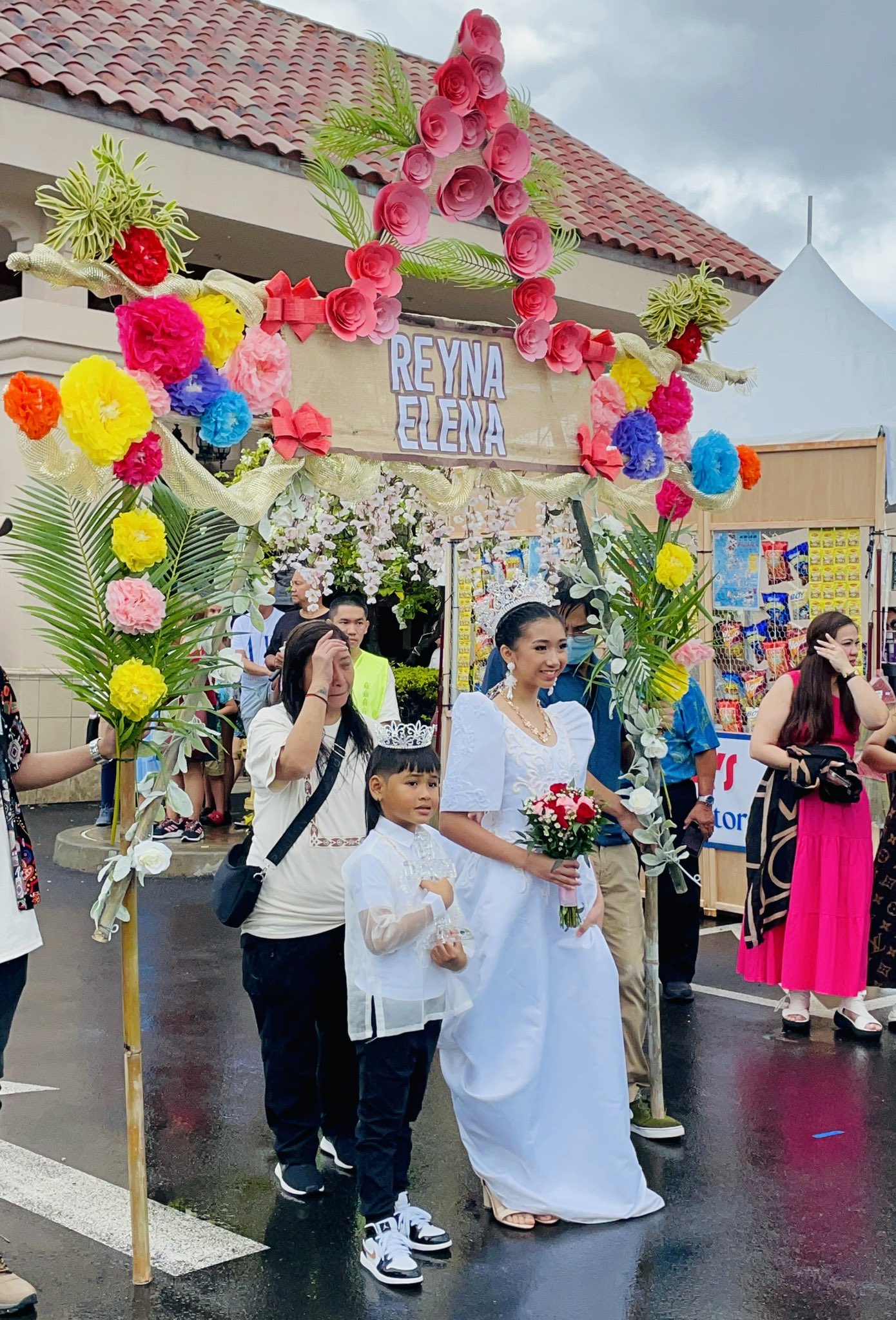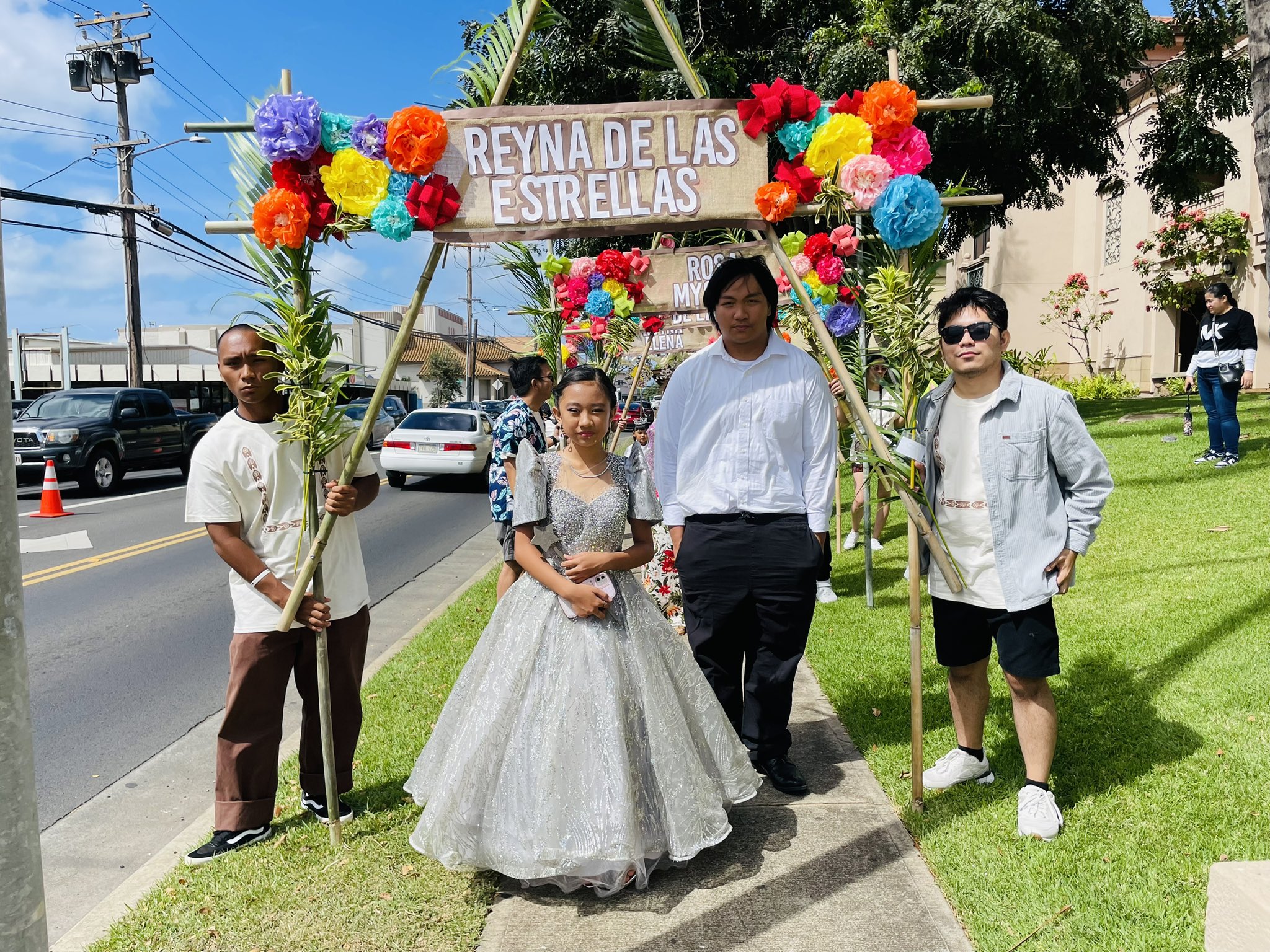In the southern part of the island of Oahu here, Filipino-American children aged five to 17 started parading amidst the rain when the clock struck 10 a.m.

The girls were donning long gowns and dresses while their escorts were wearing the traditional attire Barong Tagalog. Volunteers held arches adorned with flowers, making the procession even more grandiose.
Some of the girls were clueless as to what was happening but their parents and guardians were beaming with pride. After all, it was the day when the Filipino community in Hawaii celebrated this year’s Flores de Mayo and Filipino Fiesta event, highlighted by a Santacruzan.
In the Philippines, Santacruzan is a religious procession which originated during the Spanish colonization in the 19th century. It commemorates the journey of Queen Helena of Constantinople and her son, Constantine the Great, in finding the “True Cross” where Jesus Christ was believed to have been crucified. It is usually celebrated in May.

The Filipino Community Center and the Filipino Jaycees in Honolulu organized the Flores de Mayo and Filipino Fiesta event as they sought to pass the Filipino tradition and culture to the young generation of Filipino-Americans in Hawaii.
After all, there are about 380,000 Filipinos living in Hawaii, which is equivalent to one in every four residents in the said US state.
“Events like these unify the community and enable us to be closer to one another with the end goal of promoting our interests and helping the development of the Philippines back home,” said Hawaii Consul General Emil Fernandez.

Aside from keeping the Filipino heritage alive, the event was also an avenue for the community to express support to its members especially after the devastating wildfires in Hawaii in August last year.
At least 10 out of around 100 casualties during the wildfires were Filipinos, according to Fernandez.
“It is a great way to develop camaraderie and support one another especially [since] we’ve experienced some challenges the past year. One of them was the wildfires in Maui and we saw many of our countrymen who were casualties,” he noted.
“What’s inspiring is the members of the community, not just in Maui but other big islands as well in Hawaii, they came together, raised funds and provided various support to help their fellow countrymen,” he added.
This year’s theme for the Flores de Mayo and Filipino Fiesta event was “Celebrating a Resilient Community,” which serves as a “unifying call to celebrate the fortitude that binds us together, acknowledging that our shared journey is marked by the determination to overcome obstacles and emerge stronger together.”

Aside from the Santacruzan, the Flores de Mayo and Filipino Fiesta event also included an adobo cookoff, and a balut eating contest. It also featured a sari-sari store where visitors could buy an assortment of favorite Filipino snacks and sweet treats.
A cultural and interactive journey dubbed “Habi at Baro” showcased indigenous fabrics, jewelry and artifacts from different areas of the Philippines collected over a three-year period by artist and designer Iris Viacrusi.
A Filipiniana market offered brand new Filipiniana clothing such as Barong Tagalog, Maria Clara gowns, and kimonas to shoppers while an immersive space designed to celebrate Filipino heritage through engaging activities such as traditional games, arts and crafts, and storytelling also made children happy.

An immersive experience at their Cultural Village showcased diverse aspects of Filipino heritage, traditions, and contributions as their stage transformed into a platform for cultural expression to celebrate the vibrancy of Filipino arts; while an initiative called “Filipino Oral History Project” gave the participants a chance to uncover and document the stories behind cherished family items and heirlooms to showcase the Filipino heritage.
Credits to Martin Sadongdong, Manila Bulletin: https://mb.com.ph/2024/5/4/resilient-filipino-community-thrives-in-hawaii






